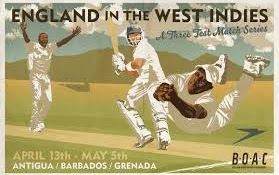
Swift Pitching in the Massachusetts Game
Rule eight of the 1858 Dedham rules states the following:
The ball must be thrown, not pitched or tossed, to the bat.
Rule three of the 1854 Knickerbockers Rules states the following:
The ball must be pitched, not thrown, for the bat.
The immediate question is, “What did it mean in the nineteenth century for the ball to be pitched, tossed, and thrown?”
Regarding The Massachusetts Game, a newspaper article from 1856 stated that “The ball was thrown, not pitched or tossed. It was thrown with vigor, too, that made it whistle through the air with a solid smack in the catcher’s hands.”
Indeed, in the nineteenth century, to “throw” a ball meant to throw it overhand, the way you would throw a rotten apple at a tree to see it explode. To “pitch” a ball was to lob it underhand the way you would pitch a horseshoe onto a peg. To “toss” a ball is to throw it more vigorously underhand, not too unlike what fast-pitch softball players do today.
Thus it is clear from this language that The Massachusetts Game was originally intended to be a “swift pitching” type of game (i.e. the ball was to be “thrown, not pitched” to the batter), whereas The New York Game was originally intended to be a “slow pitching” type of game (i.e. the ball was to be “pitched, not thrown” to the batter).
Indeed the fact that there is a foul territory in The New York Game is consistent with the notion that the game was originally intended to be a slow-pitch type of game. In a slow-pitch type of game, such as slow-pitch softball or The New York Game, the ball is expected to be put “in play” more often by the batter. Without foul balls, this would cause there to be too much area that the fielding team would need to cover. Therefore the ball being fair only when it is hit in the forward direction makes sense. In contrast, in a fast-pitch type of game, such as cricket or The Massachusetts Game, it is more difficult to put the ball in play, so any ball hit by the batter, no matter what the direction, should be considered a fair ball.

It should thus be noted that the original New York version of base ball wasn’t actually baseball as we now now it. Rather, we would probably recognize it more as a game of slow-pitch softball.
In fact, it is no coincidence that many who play the New York style of baseball in the nation play a version that is consistent with how the game was originally designed to be played. Indeed, slow-pitch softball is generally more common among amateurs than is the swift-pitching counterpart of baseball.
Moreover, many of the more interesting hits both in cricket as well as in Twenty-First Century Townball are those that are hit back behind the batter. The fielders in both of these great games that play back behind are kept very busy. Being the swift-pitching game that it is, this would also be true of baseball today if were not for the foul territory. But alas, none of those great hits amount to much in the way of an offensive threat. What a wasted opportunity, both for the fielder and batter alike!
